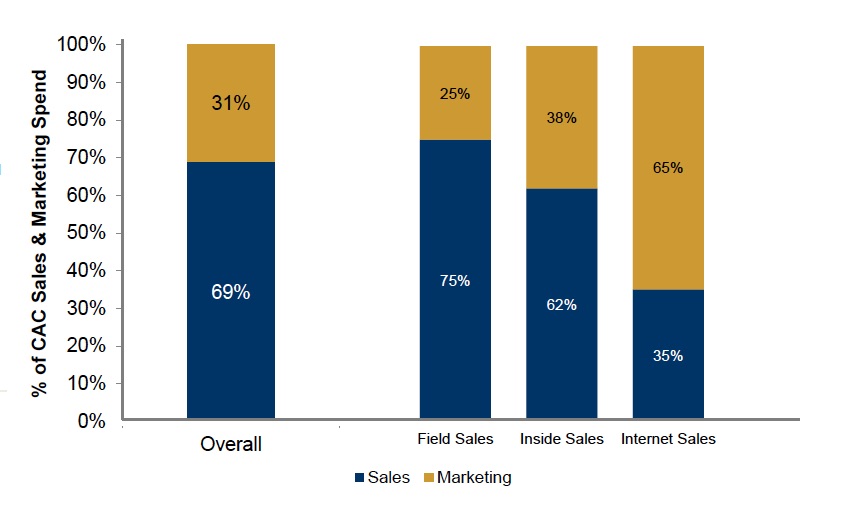Bad leads cost you money; they don’t make you money
/I know this is hard to believe, but sales people occasionally complain about marketing. And they usually moan about two things in particular:
- Not enough leads
- Poor quality leads
I’ve seen this a lot, so I can tell you how lots of marketing people react. They focus on fixing the first item – generate more leads – but pretty much ignore the second – improve the quality.
Why? Usually because it’s just easier and faster to crank up the lead volume: spend more on pay-per-click, add a couple more events to the calendar, or push out more direct mail. Voila! More leads.
At some companies, in fact, the marketing team’s compensation scheme may be tilted to encourage this. They pick up a bonus for hitting some target number of leads.
A “suspect” is not a “lead”
Of course, if you’ve been through this kind of thing before, it’s easy to see the fly in the ointment here.
The fact is that lots of these “leads” are not really “leads” at all. Many are really just “suspects” or “contacts.” They’re names of people that may be interested in buying at some point in the future… but not yet. You know very little about them and they’re not at all ready for a direct conversation with a sales person.
So what happens when we pass these “suspects” along to a sales person who then tries to get in touch with them? Usually two bad things:
For one, the prospects are bothered and annoyed. They don’t pick up the phone, reply to an email, or give a call back. Why would they? I know when I get a phone call that starts with “I see you were just on our pricing page,” that’s doesn’t make me feel warm and fuzzy.
Yes, I know there’s all kinds of research that says you need to connect with a prospect within 5 minutes of their inquiry, and that may work when it’s an inquiry from a qualified prospect. But does downloading a white paper or signing up for a webinar really count as an inquiry from a qualified prospect?
How to waste an expensive resource
Here’s the other bad thing that happens when you chase down these unqualified prospects: you end up squandering one of your most valuable and expensive resources – sales people.
According to a survey conducted by Pacific Crest Securities, in software-as-a-service (SaaS) companies that sell through field or inside sales teams, sales expenses account for the largest portion of customer acquisition costs (CAC).
CAC Composition: Sales vs. Marketing Cost % of CAC

Source: 2015 Pacific Crest Private SaaS Company Survey, October 16, 2022
For SaaS companies that need to keep customer acquisition costs under control – and by the way that basically means all SaaS companies – wasting sales resources is not a ticket to success.
Tossing “suspects” or “contacts” from the marketing team over to the sales team just causes more problems. Where sales people were once complaining about sitting on their hands, without enough prospects to call, now they’re complaining about wasting time trying to chase down people who aren’t ready to talk to them.
Cultivate “suspects” into “leads”
Many of these “suspects” need more time to educate themselves. They’re still at the beginning of their evaluation process and need to better understand the options available to them. That takes time. Remember, these are busy folks and often get interrupted by other priorities.
Using sales professionals to chase these suspects is too expensive. Instead, SaaS companies should be cultivating them, nurturing them until they are ready.
So what’s this “cultivation” all about? It’s really just a cost-effective way to stay on a prospect’s radar screen. When the prospect does focus again on whatever the problem is that you solve, they’ll have you and your solution at the top of their mind.
White papers, newsletters, webinars can all be effective cultivation tools. (You should see what works best for your particular prospects.)
The key is to find some way of staying in touch that’s relatively inexpensive, educates the prospect, and most importantly doesn’t require an expensive sales person.
And whatever method you use, it should provide an easy way for the prospect to signal that they’re ready for the next step… a way for them to raise their hand and indicate that they are now ready for a direct conversation. (Contact me if you need help with this.)
I doubt I have the key to everlasting peace, harmony, and love between sales and marketing. But if you’re in marketing and you hear complaints from the sales folks about leads, here’s an idea:
Think first about the quality of leads, before you think about the quantity… not the other way around.
Simply tossing more suspects or contacts into the pipeline, without a way to cultivate and qualify them, wastes time and resources. And it won’t make you any more popular with sales.